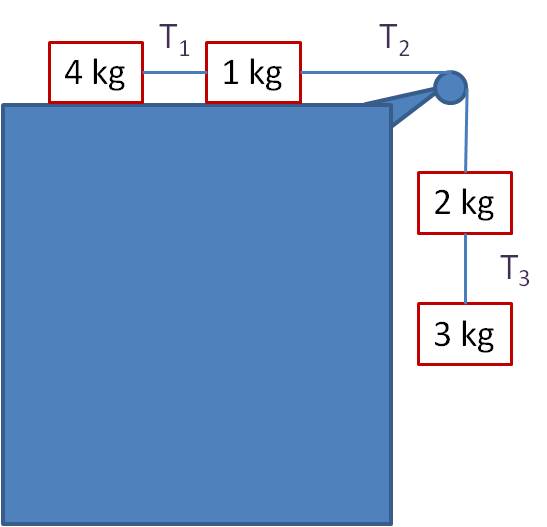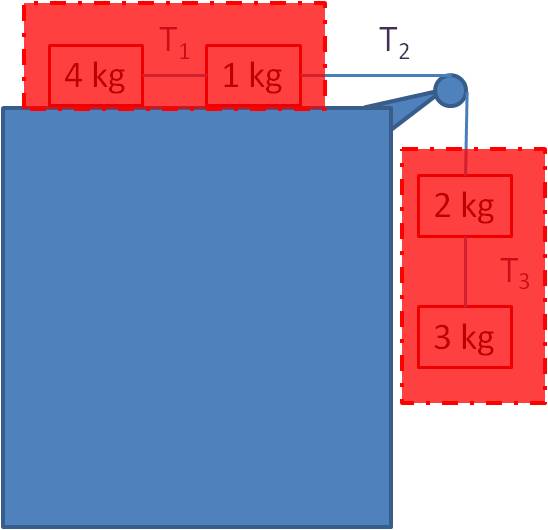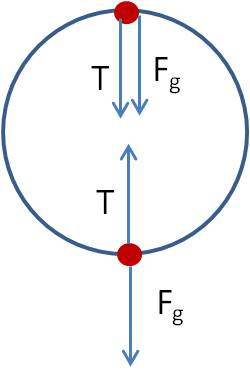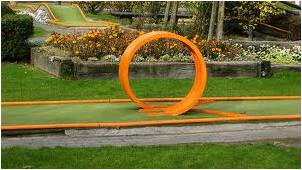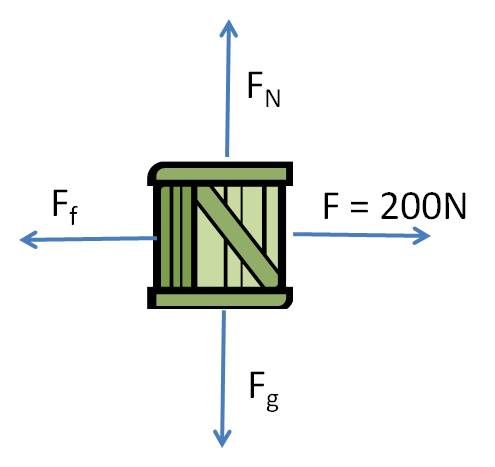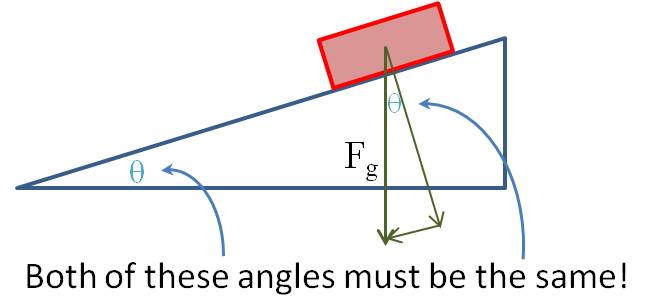In a pulley problem, if you have a chain of boxes all connected by ropes, first find the tension in the rope that goes over the pulley (treat all of the boxes on the table as a single box and all of the boxes hanging down as a single box). Then work your way to each end of the chain one box at a time to find the tension in each rope along the chain.
Example: Find the tensions in each cable and the acceleration of the blocks in the diagram below. Assume that the pulley is massless and the table and pulley are frictionless.
Solution: First, treat the two blocks on the table as a single unit of 5 kg, and treat the two hanging blocks as a single unit of 5 kg:
The net force equation for the “block” on the table is:
T2 = ma = 5a (1)
The net force equation for the hanging “block” is:
mg – T2 = ma → 5g – T2 = 5a (2)
Plugging equation (1) into equation (2) gives
a = g/2 = 4.9 m/s2 and T2 = 5g/2 = 24.5 N.
Now you can find the other tensions. Find T3 by doing an FBD on the 3 kg block:
3g – T3 = 3a = 3g/2
Solve to get T3 = 3g/2 = 14.7 N. Find T1 by doing an FBD on the 4 kg block:
T1 = 4a = 2g, so T1 = 19.6 N.

